Japan’s recent tourism boom is no secret and, with approximately 28.7 million tourists visiting in 2017 — almost a 20% increase from 2016 — it seems like Japan has reached cool status at last.
But enthusiastic efforts by local and regional governments to capitalize on the trend are making it harder to discover authentic, local experiences and to find a place beyond the well-trodden tourist’s path. Anybody seeking to understand the real Japan, in all its complexity and apparent impenetrability, might feel like they’ve run out of options — especially if they’re not a first-time visitor. So, where should you go if you were already a fan before Japan reached so many million likes?
From Tokyo to Tohoku
Follow in the footsteps of Japan’s national poet, Basho, to the deep north of the Tohoku region to find samurai-era villages, vibrant festivals, friendly locals and some of the country’s most beautiful natural scenery. It’s a place that remains off the beaten track and then some; yet, it’s incredibly easy to access from the capital. A 90-minute ride on the JR Tohoku Shinkansen gets you to the bustling city of Sendai, Miyagi prefecture, the final urban gateway before you reach swathes of untamed terrain reaching all the way out to the edge of Japan’s main island.
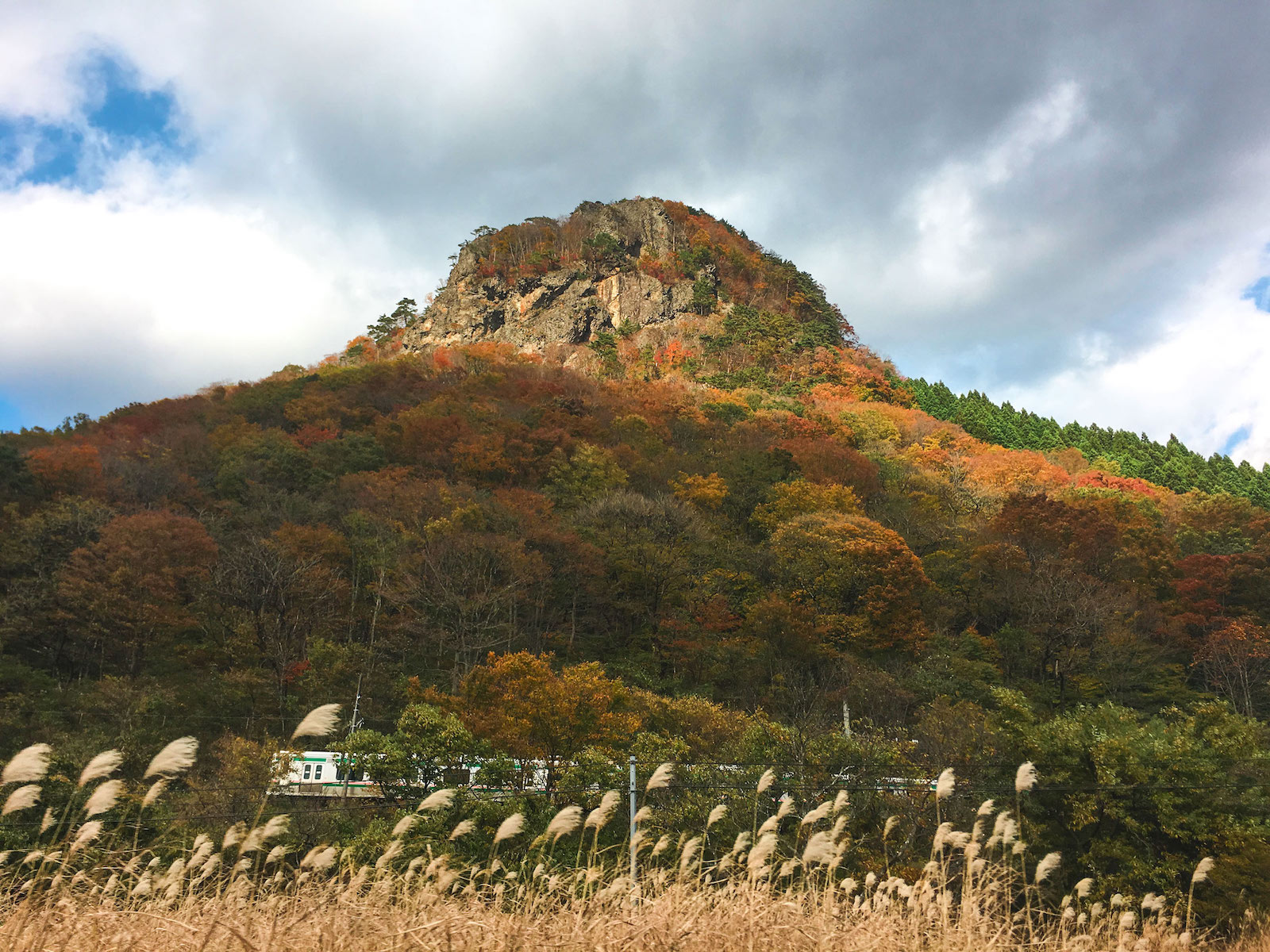
Go wild
Beyond Sendai is where things get wild. Making up almost one-fifth of Japan’s total area, Tohoku’s rough-hewn mountains and river lowlands are ripe for outdoor activities; Mt. Bandai, “the rock ladder to the heavens” stands as a symbol of the region’s dramatic beauty, providing challenging hiking trails in the warmer months, and top-notch powder for skiing and snowboarding when the temperature falls. Although harsh winters have historically kept the permanent population low, visitors will always find a warm welcome no matter what the season.
Abundant nature has also gifted Tohoku with plenty of prize produce. Crystal water flowing down from the mountains helps nourish the nation’s favorite tomatoes and apples, as well as the award-winning Nikka whisky.
And in Japan where there’s water, there’s also onsen.
Sakunami Onsen
Travel just 25 kilometers north-west of Sendai city to stumble upon Sakunami Onsen, a mountain-top hot spring retreat rich in folklore and unique traditions that has for centuries continued to play a quiet role in the development of Japan. Born from a chance discovery almost a millenia ago, Sakunami Onsen has stood through feudal wars, rapid industrialization, natural disasters and economic recessions, to remain a vital hub of health and restoration for the local population. Its numerous co-ed onsen baths make it an eccentric rarity of Japan’s hot spring landscape; a place that treats its rich history with reverence.
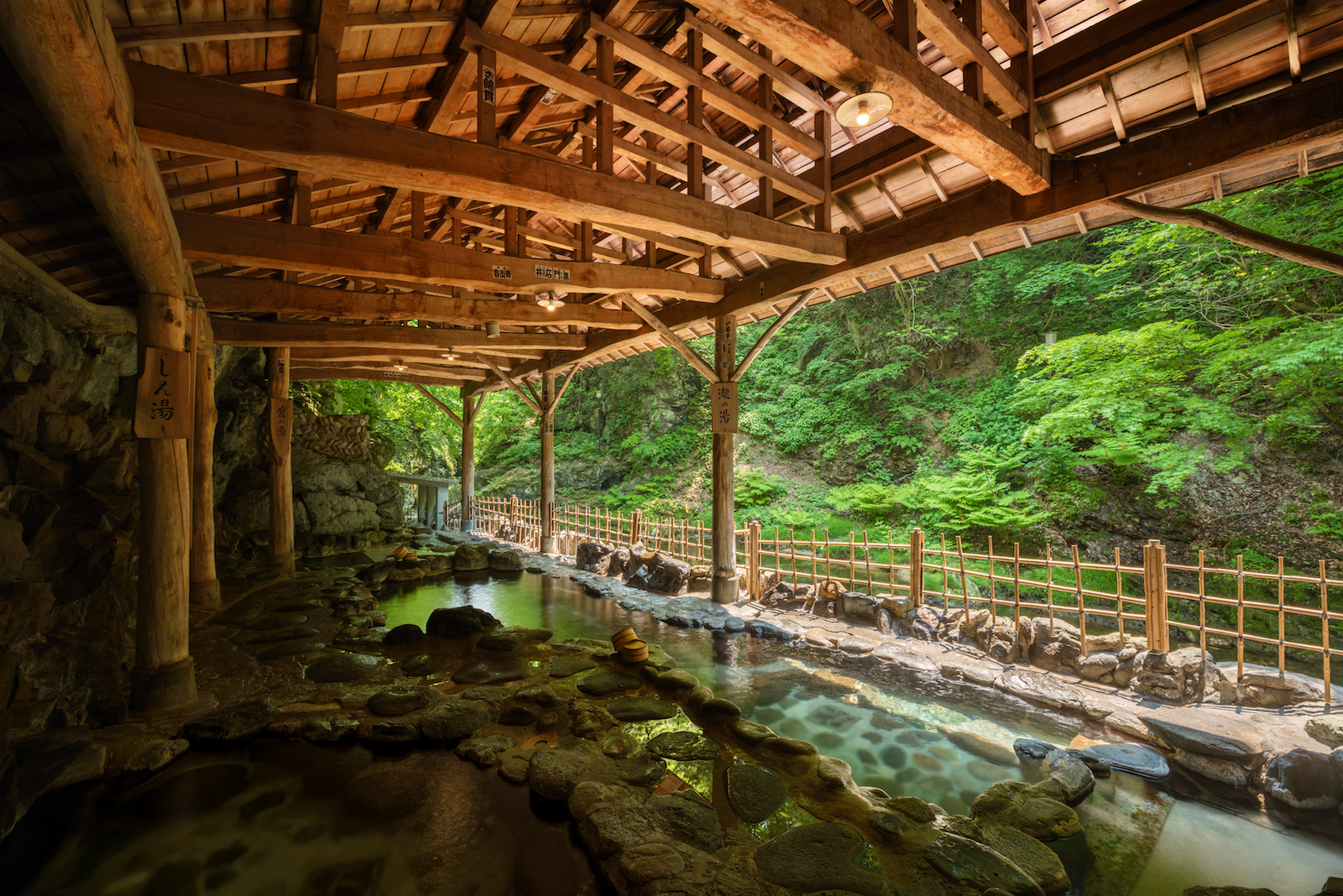
Just five ryokan (Japanese inns) make up Sakunami Onsen, all dotted along an old road leading to Sendai City that follows the path of the river towards Yamagata Prefecture; LaLa Resort Hotel green green, Yunohara Hotel, Katakuri-no-Yado, Yosenkaku Iwamatsu Ryokan and Yuzukushi Salon Ichinobo.
JR Sakunami Station is the quaint entry point for visitors coming by train. Look closer though and you’ll discover that Sakunami’s train line was the model for that modern day symbol of Japan’s technological advancement — the bullet train.
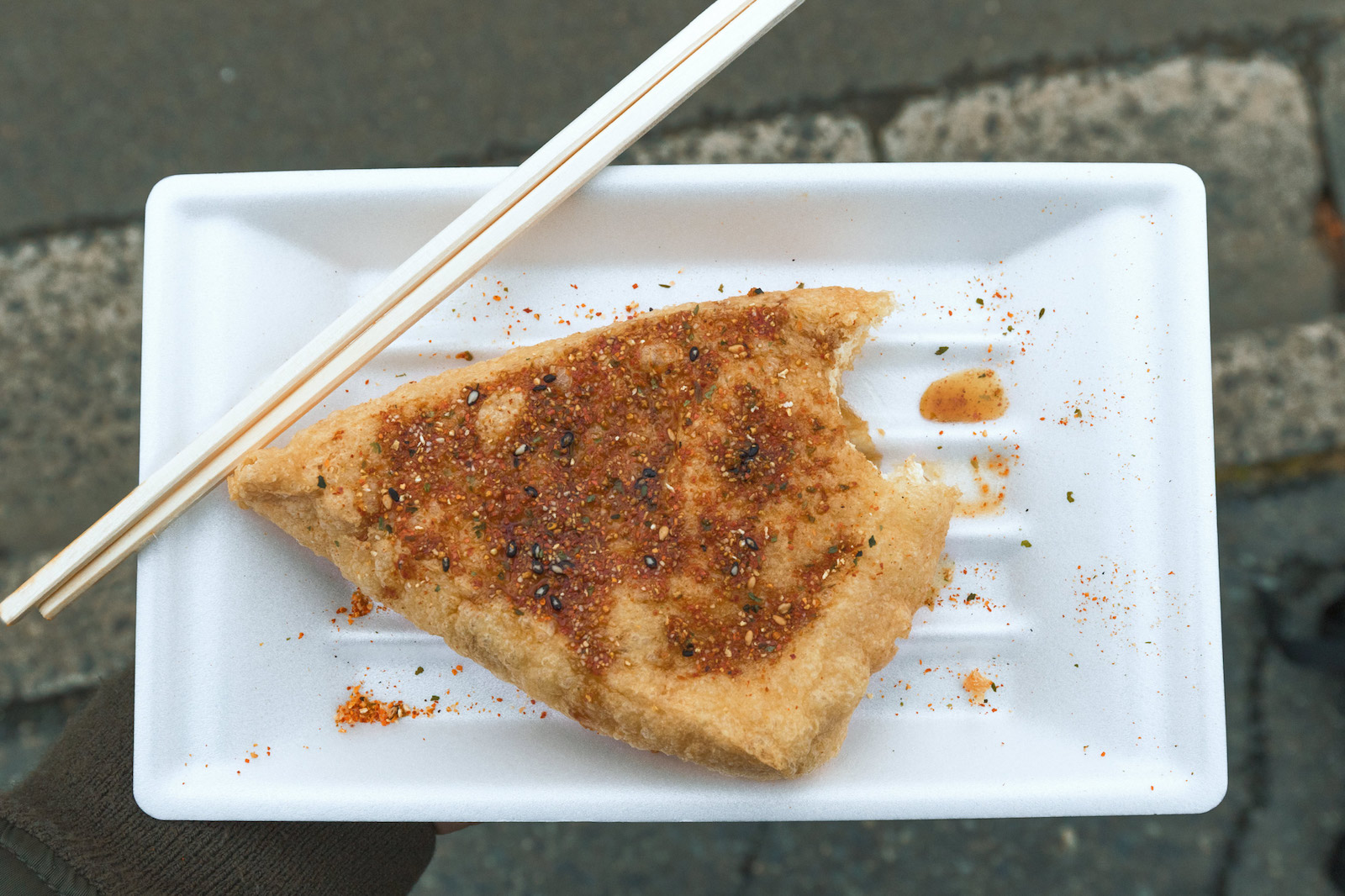
Less than 100 meters away is the original Tsutsumiya confectionery store, which now sells its delicious deep-fried agemanju and dango in branch stores across the country. Here and the omiyage shop inside the station are your last port of call before a sea of emerald rice paddies, punctured by three towering kokeshi dolls in the distance. Beyond, lies a hint of something otherworldly; a timelessness that’s hinted at in the Sakunami Onsen’s various origin tales — tales which locals love to tell to visitors.
The hawk and the arrow
There are two main legends surrounding Sakunami Onsen. The first dates back to 721 in the Nara period, when a prominent monk walking in the forest was led by a bird to discover a secret spring beyond a waterfall. Taking it as a sign from Buddha, the monk spread the word about the water and its healing powers. The second recounts the story of the first leader of the Kamakura shogunate, Minamoto no Yoritomo, while on a military expedition in 1195. His soldiers resting, Yoritomo shot an arrow at a hawk and went to search for it. Ending up in a deep valley, he found the hawk submerged in a hot spring when, suddenly, it rose from the water, spread its wings and flew away. Yoritomo then took his troops to bathe in the water, and the rest is hot spring history.
After its discovery, Sakunami Onsen remained a secret to all but a select few elites. The resort itself was only founded in 1796 by Kisoji Toshitaka, a member of the Iwamatsu family, who pleaded with Sakunami’s feudal lord to open the springs to the outside community. Toshitaka built a road through the area and established an inn known as Iwamatsu Ryokan on a hill overlooking the river. Getting down to the hot spring waters required construction of a steep wooden staircase — now an iconic feature of the ryokan, and of Sakunami Onsen itself.
Iwamatsu Ryokan
With 91 guestrooms, an enormous dining hall, a banquet room, gallery, restaurant, lounge and more, Iwamatsu is palatial — it’s easy to picture the presence of stately visitors and their entourage mixing with poets and artists as the reputation of Sakunami spread.
In fact, not much has changed since then. Step through the (now automated) doors to be welcomed by a neatly lined row of even more neatly dressed staff. Huge, high-ceilinged windows let the light and landscape spill in. Spacious, open tatami rooms are equally as impressive, each featuring private balconies and some; private outdoor baths.
Led by the exuberant and disarmingly generous Iwamatsu-san, the ritual of ryokan is followed to the letter here. It’s bathe, relax, eat, bathe, relax, relax, relax. Dinner can be served in the room, if you opt for a multi-course kaiseki, or enjoyed in the restaurant hall where chefs are stationed around the perimeter serving up all kinds of food from sushi to curry to steak; or you could head to the izakaya on the basement floor. There’s even conference rooms, a gallery and a souvenir shop to poke around in between dips.
Scene-stealing baths
At Iwamatsu, the natural hot spring waters collect in rock-lined outdoor baths called iwaburo, clustered along the Hirose River — so clear you can see the the individual scales of its colorful fish.
Taki no Yu, Kawara no Yu, Shinyu and Taka no Yu, named after Toshitaka, offer a gloriously quintessential onsen experience straight out of a movie: bathe in silky waters while looking out into the emerald forest — not a pylon, building, road or any indication of 2018 in sight. Baths are different temperatures, with the hottest at around 50 degrees celsius, and they all come with varying curative properties related to almost any problem you can think of; eczema, neuralgia, intestinal issues, muscle fatigue can all be soaked away (at least temporarily).
Mixed Onsen
The outdoor baths at Iwamatsu are all mixed, maintaining the inhibition-free Japanese tradition of naked socializing. And in such a picturesque and timeless setting it makes complete sense. Letting go of any preconceived self-consciousness, the practice can be disarmingly relaxing. Since the bath is open 24 hours, it’s possible to find a time where you’ll have the waters all to yourself.
Still if you still can’t take the leap, there is also an equally beautiful women-only bath upstairs called Koka no Yu, and certain time slots of the other baths are dedicated for women only.
Other attractions
The water also provides a different kind of medicine, whiskey, which you can explore at the nearby Nikka Whiskey Sendai Factory. Masataka Taketsuru, known as Japanese whiskey’s otosan, picked this spot as the location of his second distillery after drinking from the river. Free yourself from the hypnotic pull of the onsen, and go for a tour with a tasting at the end. True whiskey enthusiasts can request to blend their own custom whiskey; you’ll just have to wait 11 years until you can come collect it.
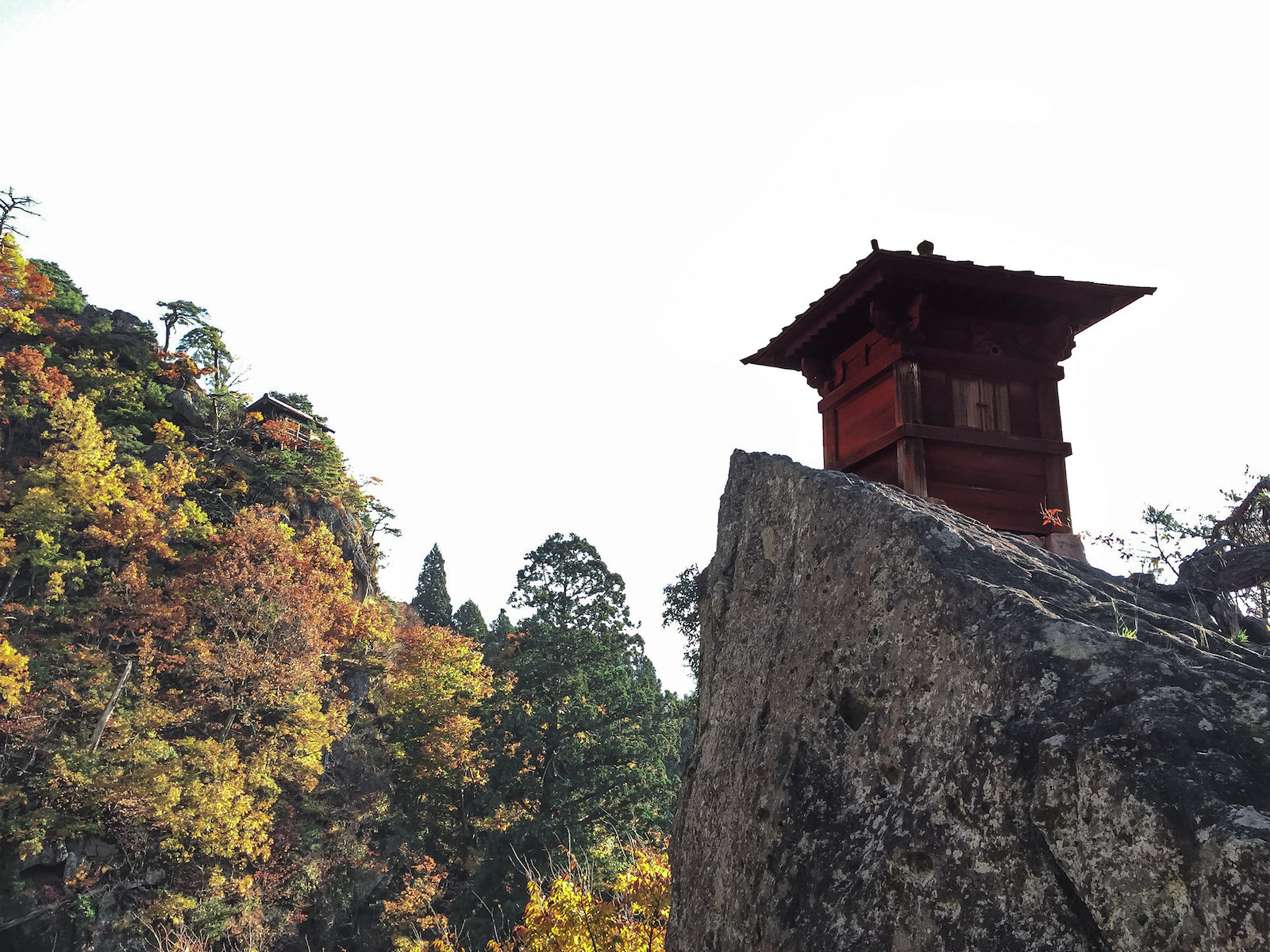
Nearby Yamadera Temple is worth sobering up for, cited as the place where Basho composed his most famous haiku. The complex climbs up the mountainside; visitors will need to scale the 1,000-plus steps to reach Godaido Hall and its glory hallelujah views of the valley below.
For hiking, the Nikkawa Line, a valley stretching along the Nikkawa River toward Okunikkawa is as rewarding as they come. Along the way you’ll come across a collection of waterfalls known as the Homei (mythical phoenix) 48.
The newly-established Soba Community Center offers visitors an opportunity to try their hand at making traditional soba noodles — a perfect way to meet the locals and another example of just how hospitable Sakunami Onsen still strives to be.
How to get there
It’s about a 40-minute ride on the scenic JR Senzan line from Sendai Station to Sakunami Station. Each ryokan has their own free shuttle bus that will pick you up on request.
Find out more:
 Take our user survey and make your voice heard.
Take our user survey and make your voice heard.
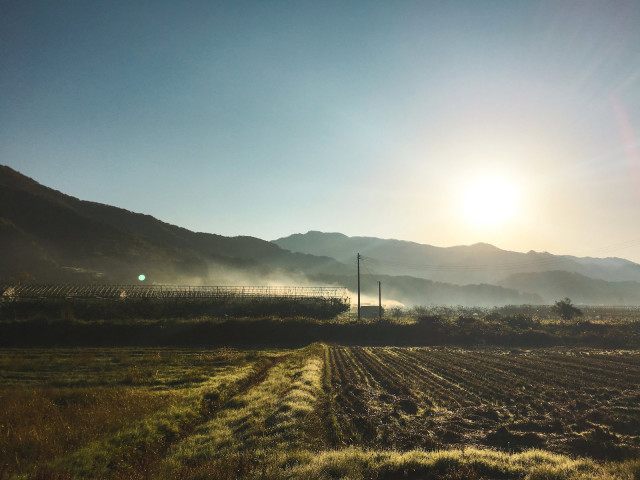












5 Comments
Login to comment
kurisupisu
Sounds all well and good but the high cost of travel,food and the effects of radioactive contamination do not make the prospect of a trip to Tohoku attractive enough for me.....
Star-viking
kurisupisu,
Thank you so much for supporting the people of Tohoku.
You might want to check both historical and current radioisotope contamination maps: both Sakunami and Yamadera suffered very little contamination, and now there's none.
Robert pearce
Would love to travel to Japan, but health and economic reasons prevent me from seeing your wonderful country. .
Love everything Japanese !!
Ryan Leong
Hi,
Is this onsen available for day-trippers?
How much does it cost for day-trippers?